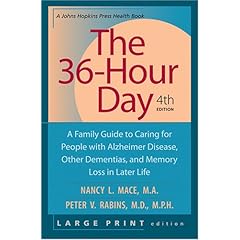
Many people admit that this is one of the hardest things they will ever do. That's how I once described the distress and despair that caregivers of dementia patients confront when they begin to ask themselves -- Has the time come to move my loved one into a residential care facility? In this excerpt from the Memory Bulletin, acclaimed Johns Hopkins professor Peter V. Rabins, M.D. discusses a caregiver's most difficult decision.
Source Johns Hopkins Health Alert
The uncertainties involved in making the decision to move a loved one to a long-term care facility are numerous, and the stakes could hardly be higher. However, for millions of caregivers, continuing to look after a loved one at home becomes, at some point, either dangerous or simply impossible. For many caregivers, the physical requirements of care, emotional stress of caregiving, lack of sleep, pent-up anger, resentment, and frustrations become overwhelming. To continue would threaten not only their health, but the health of the person with dementia as well.
Q. How does a caregiver know when the time has come to move a patient with dementia from the home setting to a long-term care facility?
Dr. Rabins. There really is not one answer to that question; any answer is different for each person with the illness and for each family. Everything depends on the symptoms the ill person has -- the degree of the impairment in his/her cognitive skills -- and on what other kinds of associated problems he/she is having in behavior and activity. The decision also depends on the ability of the caregiver to adequately meet the person's needs. Perhaps the most important question is whether it would be dangerous to continue the current situation. If the ill person needs more physical care than can be provided at home, wanders away in spite of attempts to prevent it, has become aggressive towards others and has not responded to care, or has dangerous medical conditions that need more monitoring than can be provided, then moving to a place where these needs can be better met is the right thing to do.
It is important to consider, as well, the emotional well-being of the caregiver. How overwhelmed is the caregiver? Has the caregiver been able to use the resources that are available in the community? After weighing the pros and cons of each factor, you can better make a decision.
Q. Should the goal always be to keep the ill person at home as long as possible?
Dr. Rabins. Definitely not. Some people can stay at home and die at home, and for many families that's the ideal. However, even when that's desired, it is often not in the ill person’s best interest, especially from the point of view of their quality of life. Often we find that a person actually does better when moved to long-term care. And it’s better for the family members, because then they can visit and enjoy their time with the patient without having to worry about providing all the physical care.

The 36-Hour Day: A Family Guide to Caring for People with Alzheimer Disease and Memory Loss in Later Life